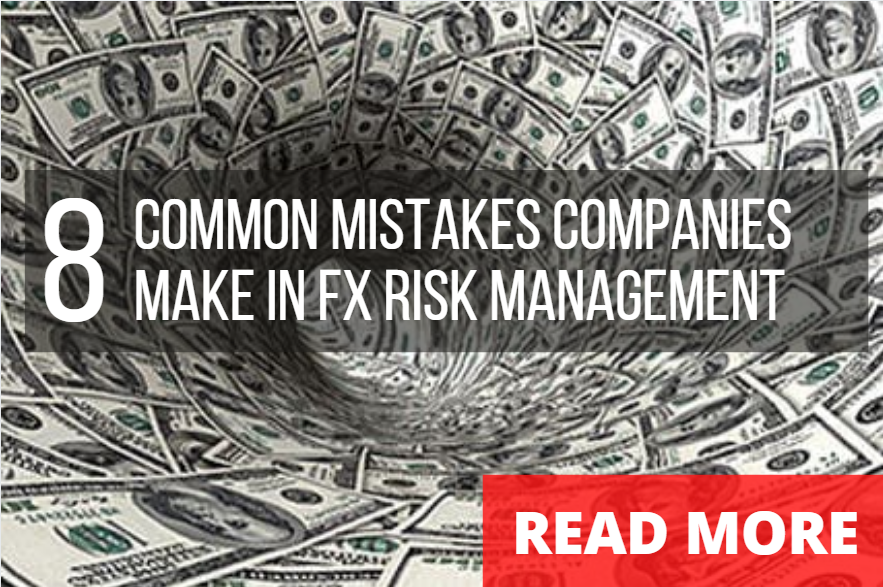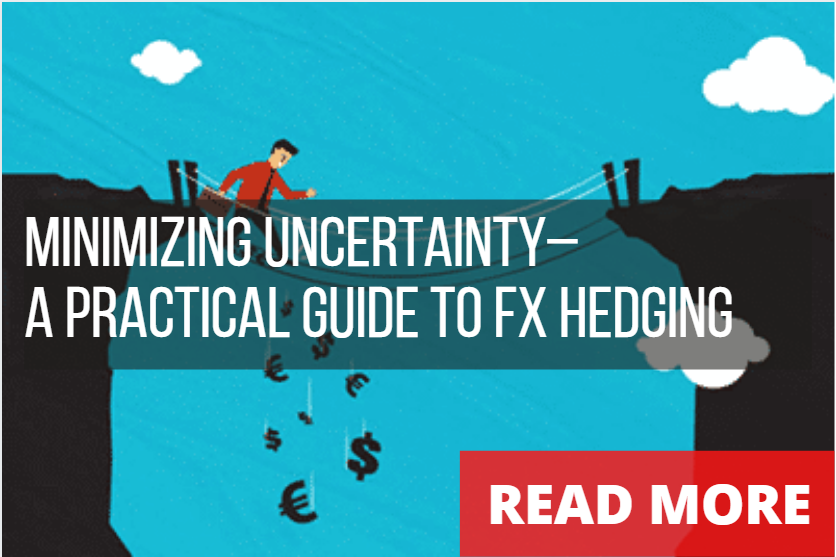
Take Control of Your FX Budget
By Ritwik Sarkar
Aug 25, 2020
4 MIN READ

When using any type of FX forecast, the simple reality is that the future is unpredictable and surprises happen. Hedge strategies that are constructed upon a market view will not consistently minimize a company’s FX risk, but instead are likely to be selectively implemented ultimately reflecting market risk. The base of every good financial plan is a strong budget, that takes into account multiple market variables, giving you the best protection against volatility.
For companies that operate a hedging policy, a budget methodology that utilizes forecasted fx rates alone can be problematic. Smaller businesses, who rely largely on these forecasts, are at a greater threat when large market swings occur. An important starting point therefore is incorporating budget rate pricing strategies in hedging decisions. For such companies, a lynchpin of the financial planning process is the fx budget rate: the rate at which companies assume they can convert foreign currency denominated transactions into their reporting currency. Setting realistic budget rates is vital to create a reliable forecast of an enterprises’ projected performance. It is imperative that the process of setting up a budget rate is tied to the fx risk management process, for companies seeking to minimize budget variances due to fx.
Re-evaluating How Your Budgets are Set
According to the 2018 Risk Management Practices Survey, 47%1 of companies still rely on consensus forecasts to set their budgeted rates. Relying solely on market strategists, disconnects the treasury team from making risk management strategies that affect their forecast ability. Using consensus forecast rates as budget rates can create a disparity between a company’s hedging efforts and its performance forecast. Locking in budget differentials raises the question, “is hedging worthwhile?” An effective budgeting strategy takes the following 3 points into consideration.
- What are the potential risks that could interfere with the accuracy of this estimation?
- What is the likelihood of these risks materializing?
- What would the impact be if they materialize?
Aligning Budgeting Forecasts with Business Goals
One of the most prevalent mistakes companies make in their FX risk management strategy is to set budget rates that are unrelated to the risk management process itself. Forecasting your business goals, need to be clear before you set your budgeting strategy. Ask yourself;
- Are the budget rates connected to your FX Risk Management efforts?
- Will they work effectively to meet your business goals for the year?
- Can you build your fx strategy to reduce your budget variance?
In addition, your budget rate should meet your overall risk management objective. Companies seeking to deliver on their forecasts must connect the budgeting process with their fx risk management efforts, to set realistic budget rates, and execute a strategy that has a high expected success rate. Certain modeling techniques can be applied to provide this information to financial planning teams and independent FX advisors, who can offer an outside perspective.
Considering Budget Rate Variations
When considering your budgeted rate, it may also be worth considering variations of such a rate. These might include:
The Actual Budgeted Rate – the rate you look to achieve to ensure profitability goals are secured.
The Target Rate – for those looking to pad profits or secure higher fx gains. In some organizations, incentives are offered if these are achieved.
The Zero Profit Rate – the rate at which margins are wiped out and you are instead focused on preventing losses.
It is best to be prepared and know what your own risk tolerances are, and what an acceptable swing in the markets would be for your company.
Using Weighted-Averages of Previous Hedges
With exchange rates fluctuating continuously during the statement period, calculating the exchange rate at which every transaction has taken place would be inefficient. To solve this issue, the company needs a method to unify the exchange rate for the whole period, and using a weighted average exchange rate is a strategy that is more suited for realistic risk management.
Setting budget rates for anticipated exposures, based on the weighted-average rate of (previously executed) hedges of exposures for the budget year, can help an enterprise make realistic assumptions based on their own exchange history.
Understand the Cost of Hedging When Preparing Budgets
In addition to the business consideration’s when planning your fx budget, there are costs associated with the trading process that are imperative considerations when setting a budget rate that works for you.
- Forwards – Knowing the forward points of the currencies your purchasing is imperative. The EUR/USD 12mth forward rate is nearly 3 cents higher, a significant expense if you are hedging Euro purchases.
- Options – Hedging with options, provides insurance and flexibility, but premium costs can quickly build, and without a designated budget allowance, fx treasury managers may struggle to seek approval post budget. Allowances should be made for implied fx volatilities. It is preferential to use longer term average for planning, rather than be biased for current conditions. For instance, implied 6-month Canadian Dollar vols are near five-year lows, and that may not be good assumption to use for anticipated hedging costs. Understanding the potential costs and outcomes ahead of time, is good planning
- Extreme Markets–Situations like Brexit, trade wars and natural disasters, can cause sizeable and erratic exchange rate movements. If you happen to be in midst of such an event during budget planning, it could skew the process. Weighted adjustments can help smooth out event risks for improved planning.
Setting a working budget rate provides the right frame work for all further fx rate decisions. Accounting external variables that are pertinent to your company’s own business forecasts will give you a more realistic outlook of your own strategy and how your budget rate can be set to meet business goals. Taking control of your fx budget therefore, is a process that involves the alignment of forecasts, business targets and a realistic expectation of how best to protect your bottom line from the volatile currency market.



